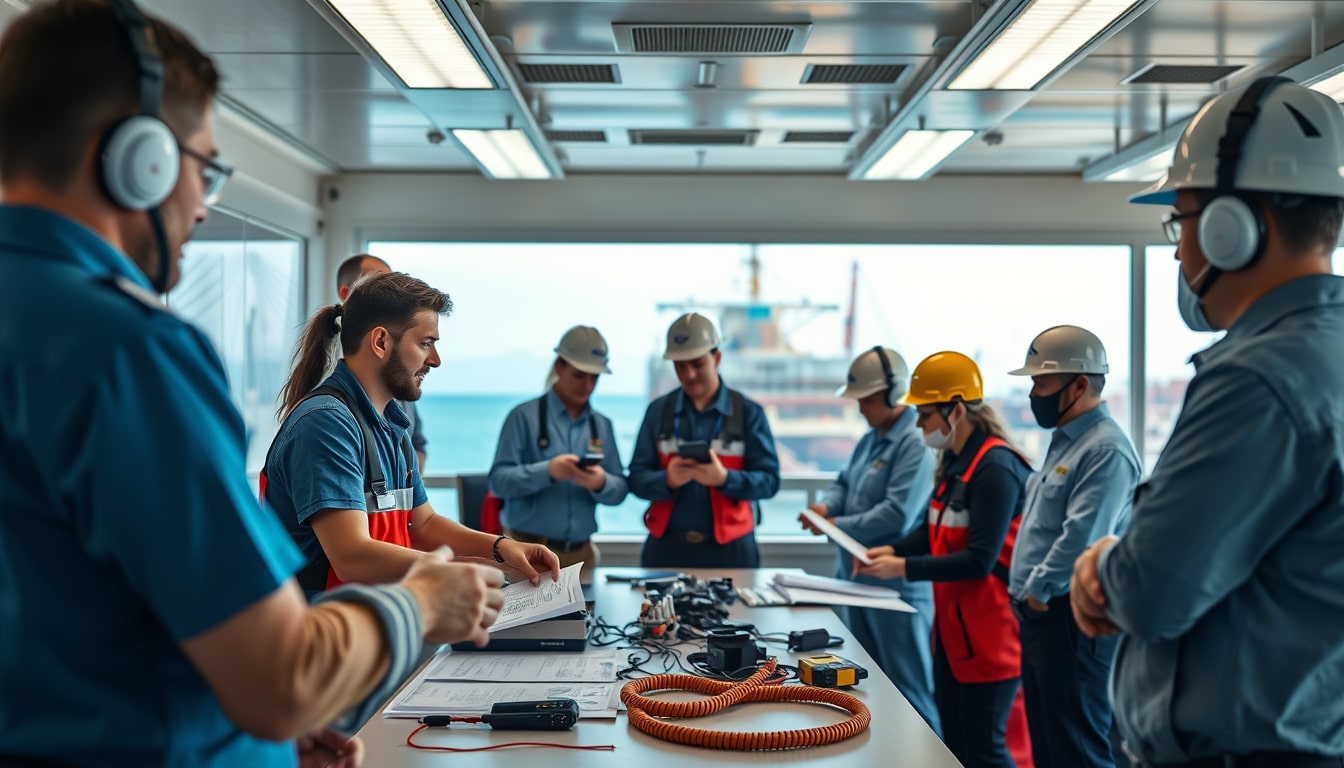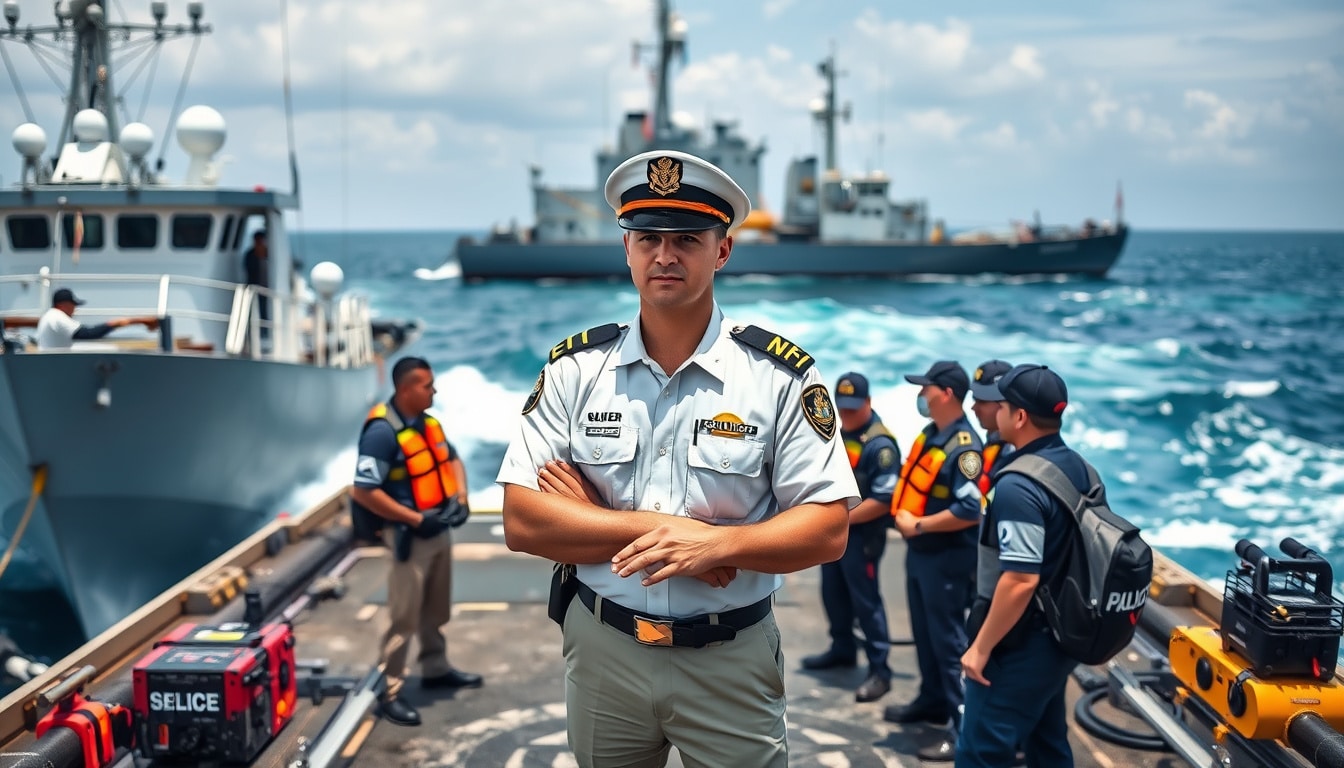In the ever-evolving maritime industry, professional training is crucial for those seeking to enhance their careers and stay ahead of the curve. The PFSO/MFSO course offered by Virtual Maritime Academy, a DNV Certified Maritime Training Provider, is designed to equip students with essential skills and knowledge for effective port facility security management. In this article, we explore inspiring student success stories and how completing our PFSO/MFSO course has propelled graduates into new opportunities and significant advancements in their careers.
Learn More about our PFSO/MFSO Course!
Key Takeaways
- The PFSO/MFSO Course equips students with vital skills for maritime security roles.
- Graduates have gone on to achieve significant advancements in their careers post-certification.
- Success stories highlight diverse paths taken by alumni in the maritime industry.
- The course fosters a strong network of professionals contributing to industry innovations.
- Personal testimonies reflect the transformative impact of the PFSO/MFSO Course on students’ lives.
Introduction to PFSO/MFSO Course
The PFSO (Port Facility Security Officer) and MFSO (Marine Facility Security Officer) courses have gained significant traction in the maritime industry, catering to the increasing need for security professionals adept in managing port and marine facility safety. At Virtual Maritime Academy, a DNV Certified Maritime Training Provider, we take pride in offering a comprehensive PFSO/MFSO course, designed not only to meet international security standards but also to ensure that our students emerge fully equipped for real-world challenges. The success stories of our alumni serve as powerful testimonials to the effectiveness and impact of this course. Many students have reported advancements in their careers and heightened confidence in their roles after completing our PFSO/MFSO course. By fostering a rich learning environment combined with industry-recognized certification, we empower students to excel, helping them secure promotions or transition into more complex roles within the maritime security field.
Key Skills Developed through the Course
The PFSO/MFSO Course offered by Virtual Maritime Academy is designed to equip students with essential skills that are critical in the maritime sector. As a DNV Certified Maritime Training Provider, our academy ensures that all aspects of the course meet the highest industry standards. Students who complete the PFSO (Port Facility Security Officer) training emerge with a comprehensive understanding of security management, risk assessment, and emergency preparedness, which are paramount in safeguarding maritime facilities. One of the highlights of this program is the student success stories; many graduates have shared remarkable advancements in their careers after completing this rigorous training. For instance, several individuals have reported promotions to senior security roles within their organizations or successful transitions to new maritime positions, thanks to the confidence and knowledge gained from our course. This illustrates not only the effectiveness of our curriculum but also the real-world applicability of the skills acquired, reinforcing how the PFSO/MFSO Course can be a transformative step in a maritime professional’s career.
Learn More about our PFSO/MFSO Course!
Profiles of Successful Graduates
At Virtual Maritime Academy, we take pride in the success of our graduates who completed the DNV Certified PFSO (Port Facility Security Officer) and MFSO (MarineFacility Security Officer) courses. These Student Success Stories speak volumes about the real-world advancements our alumni have achieved in their maritime careers. Graduates have reported significant improvements in their professional paths, with many securing key positions in port security and facility management roles. Some have moved on to pivotal leadership roles in international shipping companies, while others have launched their own consulting businesses, leveraging their advanced knowledge of maritime security protocols. One notable success story includes a former student who began his career as a junior security officer and, following the rigorous training and certification received from our PFSO course, quickly climbed the ranks to become the head of security for a major maritime terminal. These inspiring narratives not only highlight the effectiveness of our training programs but also embody the commitment we have towards ensuring our graduates are well-prepared for dynamic careers in the maritime sector. If you’re looking to propel your career forward, our DNV Certified programs are fit to equip you with the skills and knowledge necessary to thrive in today’s ever-evolving maritime environment.
Impact on Career Advancement and Industry Contributions
The maritime industry is one of the most dynamic sectors today, and completing a PFSO (Port Facility Security Officer) or MFSO (MarineFacility Security Officer) course can significantly impact professionals looking to advance their careers. At Virtual Maritime Academy, a DNV Certified Maritime Training Provider, we pride ourselves on fostering student success stories that exemplify the advancements achievable post-training. Graduates of our DNV Certified PFSO Course have reported remarkable career transformations, including promotions to senior security roles, increased responsibilities in facility management, and enhanced skills in risk assessment and crisis management. These success tales resonate throughout the industry, illustrating how specialized training not only boosts individual confidence but also contributes to overall maritime security enhancements. As our alumni continue to excel, they embody the real-world applications of their training, showcasing the pivotal role of well-developed skills in navigating the complexities of maritime safety and security regulations. By choosing to enhance their qualifications through our esteemed programs, professionals unlock new opportunities, ultimately leading to substantial contributions within their organizations and the broader maritime community.


















